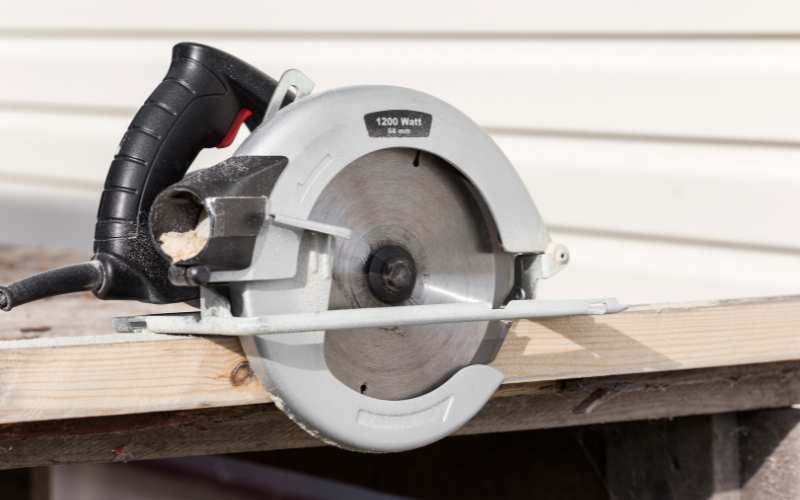If you have a circular saw or are planning to get one, then the wise thing for you to do, as with any other power tool is to learn the safety tips and precautions you need to take when using the saw.
Circular saws have many uses both in the workshop and in the jobsite. They’re very effective for making overhead cuts during building construction such as roofing, for making long rip cuts, crosscuts and a lot more.
However, one can sustain serious injury while using a circular saw if care is not taken. Good safety tips and precautions must be understood and followed diligently before using a power tool like the circular saw.
The following are some of the safety tips you must adhere to while using a circular saw.
Table of Contents
1. Put on safety equipment before handling the saw
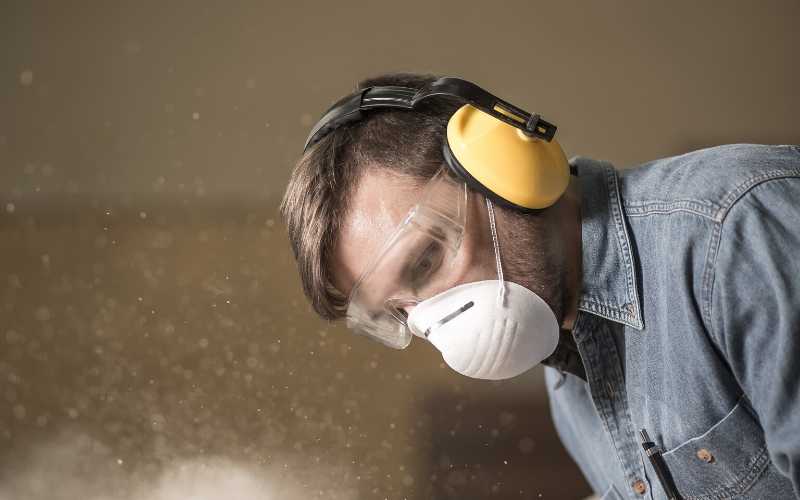
This is one safety tip you must follow before handling any power tool. You need to put on safety equipment before handling any power tool, not just a circular saw.
A good hearing protection is necessary. You also need to put on safety goggles to protect your eyes from the dust produced while using it to cut materials.
The dust produced can be harmful to you when inhaled into your lungs, so get a good respirator to go with the rest.
If possible hook up a shop vac or your dust collection hose to the port on the saw to collect all the sawdust produced while using the saw.
That will help keep your work space neat and ensure you don’t breath in any of those harmful dust particles.
2. Do a saw check
You need to check every part of the circular saw to make sure it’s working properly. Check the retracting lower guard to make sure it retracts and recovers properly.
The retracting lower guard is the biggest safety feature built into the circular saw. So, you should never use any circular saw with a defective lower guard.
Make sure it’s working freely before using the saw. While doing the check, make sure the circular saw is unplugged from the socket.
If you’re using a cordless battery powered circular saw, ensure to remove the battery before checking the saw.
This will ensure you don’t accidentally switch it on while doing the check.
3. Learn to hold it properly
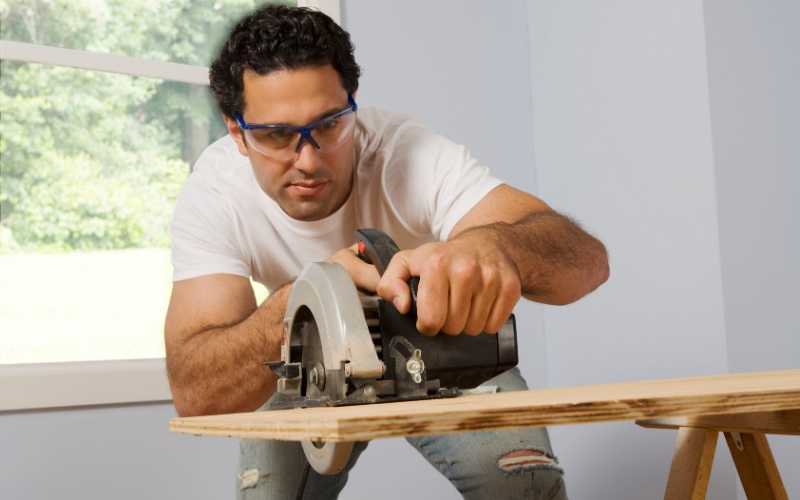
There are two types of circular saws, sidewinders and worm drive saws. Based on how they are held, circular saws are also categorized into right handed circular saws and left handed circular saws.
To learn more about right hand circular saws and left hand circular saws check out this post. However, the main point is, right handed circular saws are for righties and left hand circular saws are for lefties.
This is not a hard and fast rule though. However, when a righty holds a right hand circular saw, with the right hand holding the main handle and the left hand holding the auxiliary handle or the circular saw knob, both hands do not cross each other.
On the other hand, if a righty holds a left hand circular saw, both hands cross each other which is not ideal. If a righty is to hold a left hand circular saw with both hands not crossing each other, then he or she would have to hold the main handle with his left hand like a lefty, and hold the auxiliary handle with his right hand.
Sidewinders are mostly right hand circular saws, and worm drive saws are mostly left handed. Some people prefer sidewinders, while others prefer to use a worm drive saw due to the high torque it produces.
Whatever type of saw you have or prefer, learn to hold it properly and make sure you’re not in any awkward position while cutting with the saw.
4. Use a safe depth of cut settings
Before cutting with a circular saw, you have to set the depth of cut to match the thickness of the board you’re trying to cut.
When you set depth of cut, you need to make sure that too much blade is not exposed beneath the material you’re cutting.
So, make sure that the lowest tooth of the blade does not extend more than 1/8 inch beneath the board you’re cutting.
A depth of cut properly set like this ensures a safe and accurate cut.
Related: How To Make Straight Cuts With A Circular Saw
5. Only use sharp blades
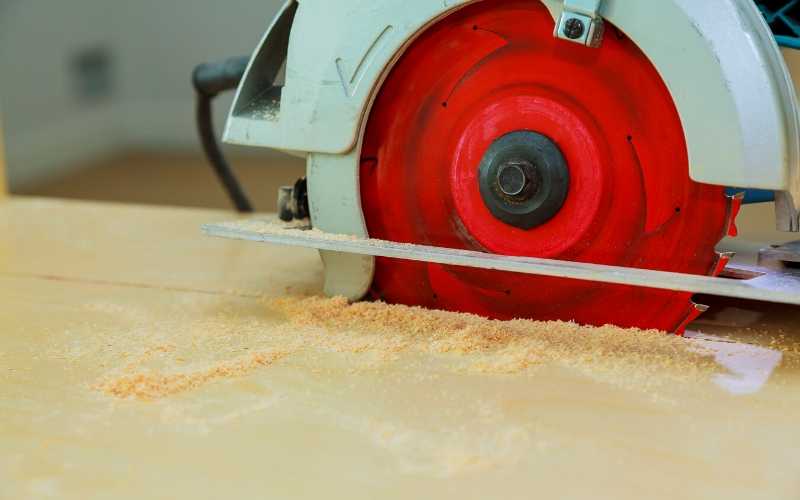
When cutting a material with a circular saw, your job is to direct the saw through the cut, not trying to force the saw through the material.
If you discover that you’re trying too hard to make the cut or trying to force the saw to cut through the material, then the most obvious reason is that you’re using dull blades.
You should not use dull blades in your circular saw. Only use sharp blades that can easily cut through the material you’re cutting.
Sharp blades makes the work easier for you and are safer to use.
6. Unplug the saw when not in use
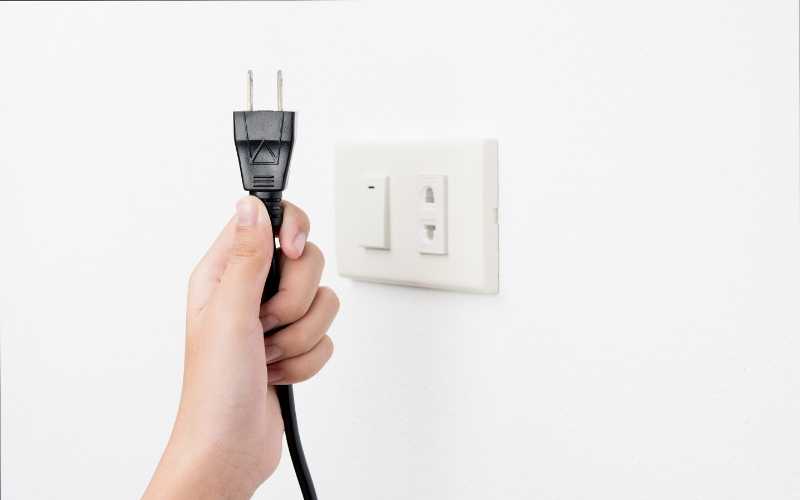
If you’re done using the saw, the safe thing to do is to unplug it from the power outlet. Never leave a saw plugged to the power outlet when it’s not being use.
You or an unsuspecting person can accidentally switch it on and cause damage to themselves or others who are around.
To avoid any accident, always unplug the saw when not in use. If you’re using a cordless circular saw, remove the battery when you’re done using it.
The same principle apply when you’re trying to swap out old or dull blades with new sharper ones. When you’re trying to swap out blades, don’t get lazy and not unplug the saw from the power outlet.
Make sure to unplug the saw first, before attempting to swap out blades.
7. Never use a defective saw
If you find out that the circular saw is not working properly, then don’t even attempt to cut any board with it.
You may notice an unusual vibration when you switch it on. Then that’s a good sign to switch it off, unplug it until it’s checked out and serviced.
8. Do not overreach
When trying to reap long boards with your circular saw. Do not try to over reach or try to cut more than your hands can extend, maybe raising one of your legs up to gain further reach with your hands.
That is wrong. Always keep a good and balance footing, and handle the circular saw with two hands as supposed.
9. Keep live cords out of the way
This one is pretty obvious, cutting a live cord may result in your electrocution. So keep live cords out of the cut area to avoid any accident.
10. Check for obstructions in the material you’re cutting
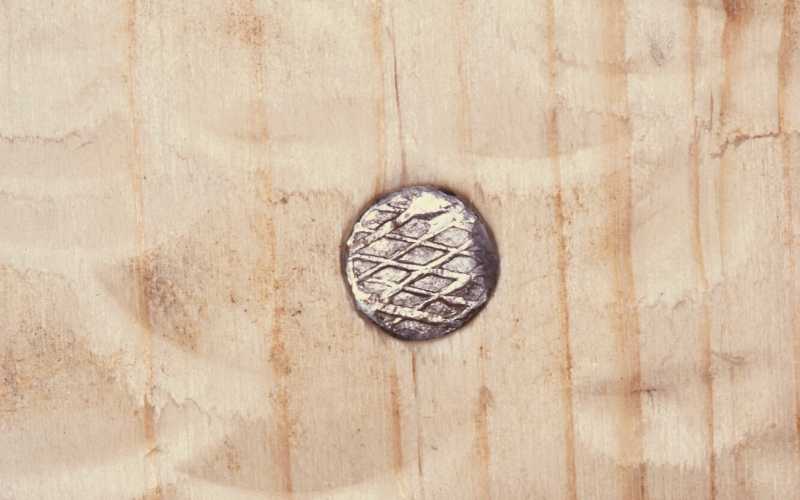
Before cutting any material, especially wood, make sure there are not obstructions such as nails and screws embedded in the wood.
Cutting a nail or screw embedded wood can cause damage to your circular saw, and worse still, might result cause injury to you.
So always keep stock free from any foreign bodies such as nails and screws before making a cut.
11. Secure the stock or board before cutting
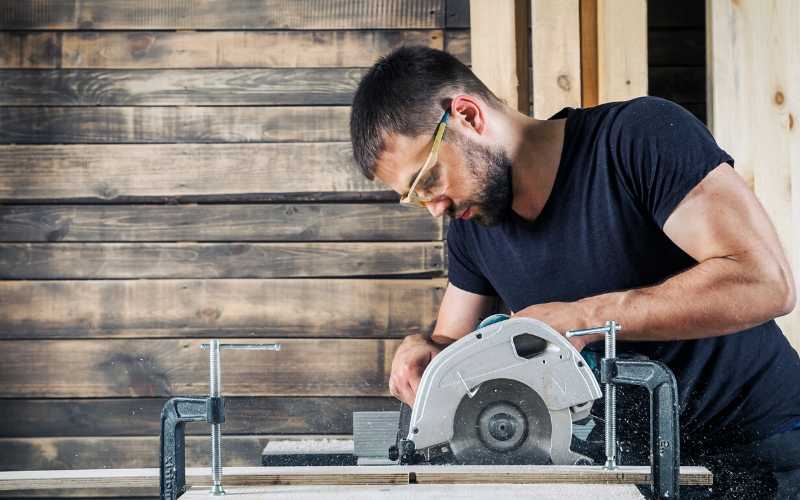
Before cutting a board, make sure it is secured with clamps to avoid any movement during the cut. An unsecured stock is unsafe to cut, and should not be attempted.
12. Don’t wear gloves while operating the saw
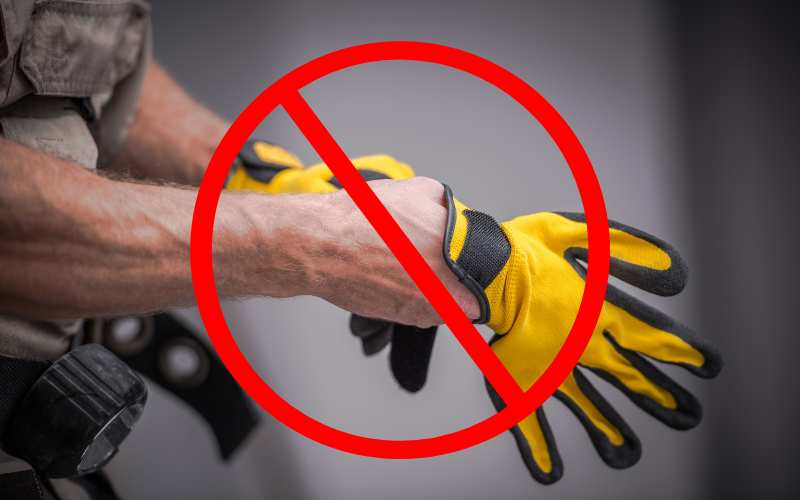
Although gloves can provide protection in many situations on the job, they can pose a safety hazard when working with power tools like circular saws that have parts that spin at very high RPMs.
Loose-fitting gloves can also get caught in the spinning blade which can lead to severe injuries.
The gloves can also limit your dexterity and tactile sensitivity, which will make it more difficult to handle the saw and maintain precise control over it, and thus increase the risk of an accident.
Gloves also affect your grip on the saw handle, reducing your ability to securely hold and maneuver it.
That’s why you should never wear gloves while operating tools like this.
Safety should always be a priority when making use of power tools of any sort. No matter how small the tool is, you should learn to respect and follow instructions and guidelines from the manufacturer.
Follow best practices and use personal protective equipment (PPE) that’s suitable for the task in hand and the type of tools you’re handling.
Always consider the potential risks and hazards associated with any tool and ensure you know how to avoid such hazards while using the tool.

